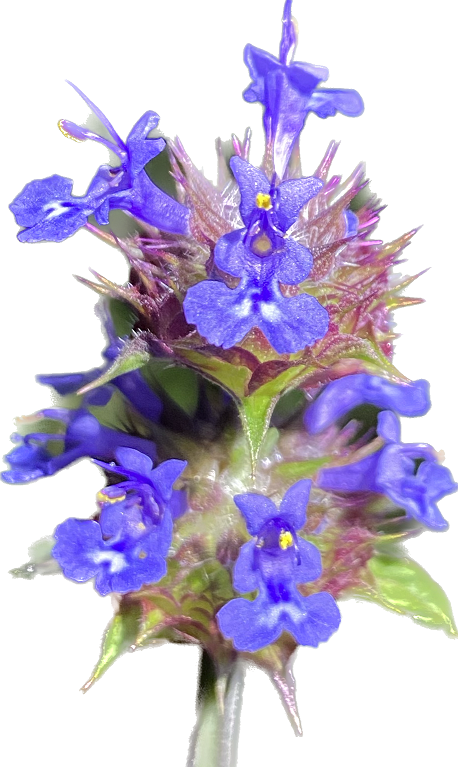

Golden Chia | Salvia Columbariae
Salvia columbariae, commonly known as Golden Chia, is a fast-growing annual herb native to California and the southwestern United States. A member of the mint family (Lamiaceae), it is especially adapted to arid and semi-arid environments, thriving in open, sandy or rocky soils. Found in chaparral, coastal sage scrub, grasslands, and desert habitats, Golden Chia is a key species for restoring native pollinator ecosystems.
Golden Chia grows low to the ground, typically reaching 6 to 24 inches in height. Its square stems are adorned with wrinkled, deeply lobed leaves that are often covered in soft hairs. The plant produces striking whorls of brilliant blue to lavender flowers that bloom in ball-like clusters. These nectar-rich flowers attract native bees, butterflies, and hummingbirds. The seeds, rich in omega-3s, were an important food source for Indigenous peoples and continue to be valued in native food traditions.
This drought-tolerant species prefers full sun and well-draining soils. It performs best when direct-sown in late fall to early spring and may self-sow under favorable conditions. Golden Chia is an excellent addition to native gardens, dry meadows, and habitat restoration projects. Sow en masse for a vivid splash of color and essential pollinator support.
Height: 0.5–2 feet
Optimum Soil Temperature for Germination: 55°F–70°F
Blooming Period: March–May
Germination: 14–45 days
Sowing Depth: 1/8"
~50 organically grown seeds per packet, open-pollinated, untreated, non-gmo.













